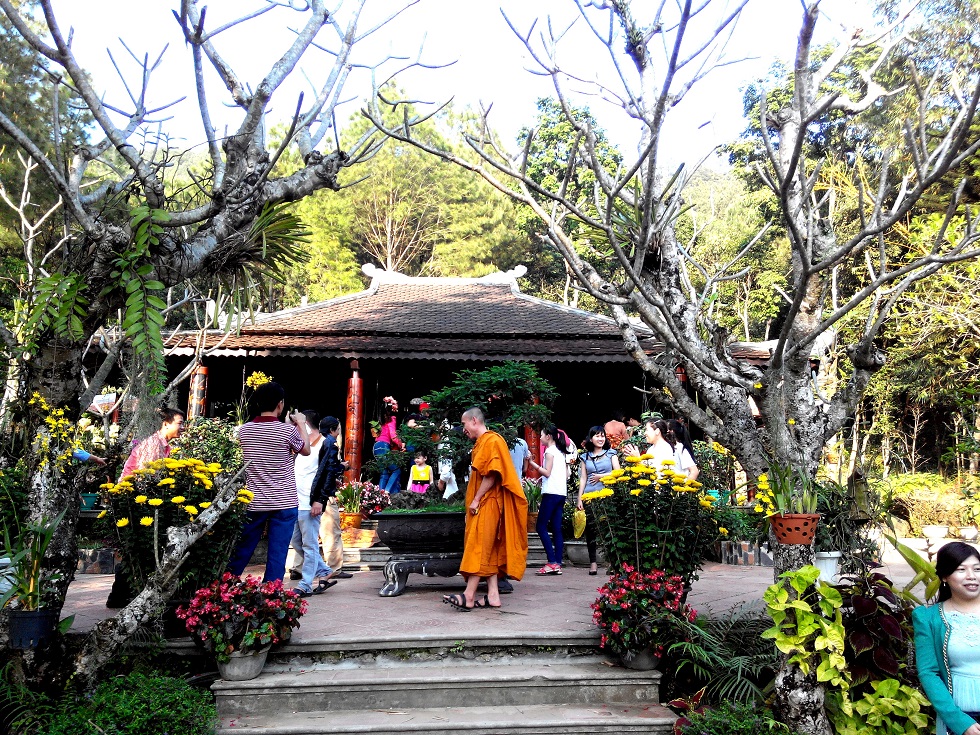A young man from Ho Chi Minh City has recalled his memorable experience of enjoying a unique Lunar New Year (Tet) in the ancient citadel of Hue.
Growing up in Ho Chi Minh City, Nguyen Minh Nhut had always wanted to live, work, and spend a traditional new year in Hue after his first visit to the old Vietnamese capital in 1996.
“The city was dreamy and quiet in a way that captured my attention. I promised myself I would spend a few years living there to discover the land,” Nhut said.
His wish became a reality when the young man was selected as a branch director of a Ho Chi Minh City- based travel company in Hue.
“I have endured blistering summer days, navigated flooded streets, and experienced freezing weather during prolonged downpours,” Nhut recalled.
“But most importantly, I have been able to enjoy a Tet holiday in Hue, at a time when the city puts on its best look,” he continued.
Care for the living and the dead
Tet is the traditional time for the women of Hue to take the spotlight as they often have their hands full making traditional confectionery for the holiday, even though everything can be bought at supermarkets, Nhut remarked.
Local women are fans of being in the kitchen, the young man continued, adding that they love cooking for family members during casual or special occasions, especially the Lunar New Year.
Holding a senior position in his company, Nhut understands that his female employees need to leave work early during this time of the year in order to carry on with the preparations.
One of the main activities prior to Tet is cleaning up the house, tidying ancestral altars and the graves of those who have passed.
“Hue people are considerate toward both the living and the dead,” Nhut said.
They like to be surrounded with family members the night before the Lunar New Year, filling the house with talk and laughter, which is opposite from the silent atmosphere that usually pervades.
However, they all take it down a notch the hour before midnight, with all the ancestral altars decorated with flowers and lights alongside the scent of incense in the air.
Nhut was most impressed by the additional altars placed in front of each residence, on which offerings, including fruits, flowers, confectionery, a glass of water and several pieces of votive paper were organized.

A wrestling festival attracts young people during the first days of the lunar year in Hue. Photo: Tuoi Tre
Theses altars are how local people pay their respects to the gods of the ground and sky.
In some households, the elderly will put on formal clothes while their sons set up small bonfires as part of a ritual to keep lonely spirits warm during a cold New Year ’s Eve.
Not just for self-indulgence
When the bells at local pagodas rang in harmony, marking the beginning of a new year, this also marked the time for Nhut to leave his friend’s house and head toward Ngo Mon Square.
Opened in 1990, the square has become a favorite location for young people to gather during Tet celebrations, with fireworks and artistic performances the main festive activities.
The bustling and cheerful event would surprise some residents as it has become quite a tradition for Hue people to welcome the Lunar New Year with family members inside their homes.
Some think staying outdoors at the start of a new year makes them no different than a homeless person.
The ‘dap dat’ is still a common ritual during Tet holidays, in which people are often selective about the first person to enter their house in the new year, as they will determine the luck of the family.
If someone celebrates the New Year’s Eve outdoors and returns to their home after midnight, they would be the first person to set foot in their own house.
However, the belief is not as strongly held nowadays, especially among the younger generation.
After arriving at the square, Nhut spotted a group of youths taking photos in front of a magnificent palace named ‘Lau Ngu Phung,’ or the Five-Phoenix Pavilion.
Several married couples had also taken their children along to be a part of the celebration.
Some cafés along the famous Huong River were open throughout the night to cater for the youngsters who wanted to keep the party going.
The next morning, the first day of the lunar year, Nhut’s friends took him to a local pagoda and cemetery to light their incense and pay tribute to their ancestors.
“They were all young and active like Saigon youths but preferred to welcome the new year in a traditional way,” Nhut explained.
“This is how the Hue Tet is celebrated,” he quoted his friends as saying.
They later visited their relatives to give them New Year’s greetings before finishing the day.
During the second day and later on, young people began their parties and celebrations with their friends, Nhut recounted.
It is common for people in Hue to prioritize their ancestors and family in the Lunar New Year, Nhut remarked, “because Tet is not just for self-indulgence.”
Like us on Facebook or follow us on Twitter to get the latest news about Vietnam!





















































